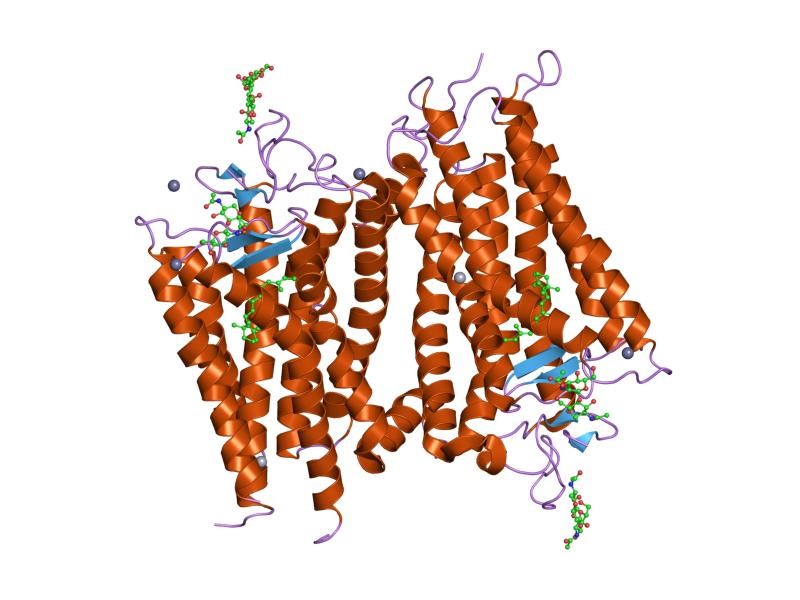Creative Biostructure can offer high-quality custom Mempro™ rhodopsin-like receptors and pumps production services using cell-based expression system. Our cell-based expression systems can best preserve the native conformation of rhodopsin-like receptors and pumps. You can count on us all through your projects.
Mempro™ cell-based protein production systems are the most used systems to produce G-protein coupled receptors (GPCRs). Rhodopsin-like receptors and pumps are a family of proteins that consists of the largest group of GPCRs. The rhodopsin-like receptors and pumps transduce extracellular signals through interacting with guanine nucleotide-binding proteins (G-proteins). Although their activating ligands are variable in structure and character, the amino acid sequences of the receptors or pumps are very similar and are believed to adopt a common structural framework comprising seven transmembrane helices (Figure 1).
 Figure 1. 3D structural model of rhodopsin. (Science, 2000)
Figure 1. 3D structural model of rhodopsin. (Science, 2000)
Creative Biostructure has strong expertise in high-yield rhodopsin-like receptors and pumps production using cell-based membrane protein expression systems, we can provide various strategies for Mempro™ cell-based protein production, including:
- Mempro™ Protein Production in Bacterial Cells System ;
- Mempro™ Protein Production in Yeast Cells System;
- Mempro™ Protein Production in Incest Cells System;
- Mempro™ Protein Production in Mammalian Cells System.
Among Mempro™ cell-based protein production systems, Escherichia coli (E. coli) is the most popularly used bacterial host for the production of rhodopsin-like receptors and pumps, providing numerous options for the optimization of the protocols. There are two principal strategies can be performed in E. coli, the expression as soluble membrane proteins inserted into the membrane or as inclusion bodies representing cytoplasmic aggregates. Yeast cells (specifically saccharomyces cerevisiae and pichia pastoris) system, combines prokaryotic as well as eukaryotic characteristics. It is a charismatic eukaryotic host due to single cells, fast growth rates, inexpensive media, high cell densities. Insect cells (such as Sf9 and Sf21) are also a major system for rhodopsin-like receptors and pumps expression, which was developed in the early stage that cultivated insect cells in combination with vectors derived from the baculovirus species AcMNPV. Mammalian cells present another eukaryotic system for rhodopsin-like receptors and pumps expression, which provide nearly native-like cell environment. Cell lines derived from COS, CHO, BHK-21, HEK293, HeLa and GH3 are commonly used for protein expression.
With the Mempro™ cell-based protein production platform, Creative Biostructure provides expressing, isolating, purifying and crystallizing rhodopsin-like receptors and pumps to facilitate the study of their biological functions. Misfolding, aggregation, inactivity, poor stability and solubility are the common difficulties encountered in GPCRs production. Strikingly, we can overcome these difficulties by optimizing these factors like expression vectors, host strains, growth conditions, co-expression of helper proteins and fusion tags, etc.
We provide other various Mempro™ membrane protein production services. Please feel free to contact us for a detailed quote.
References:
F. Junge, et al. (2008) Large-scale production of functional membrane proteins. Cellular and molecular life sciences, 65 (11): 1729-1755.
K. Palczewski, et al. (2000). Crystal structure of rhodopsin: A G protein-coupled receptor. Science, 289 (5480): 739–745.
Rhodopsin-like receptors. (https://en.wikipedia.org/wiki/Rhodopsin-like_receptors).
